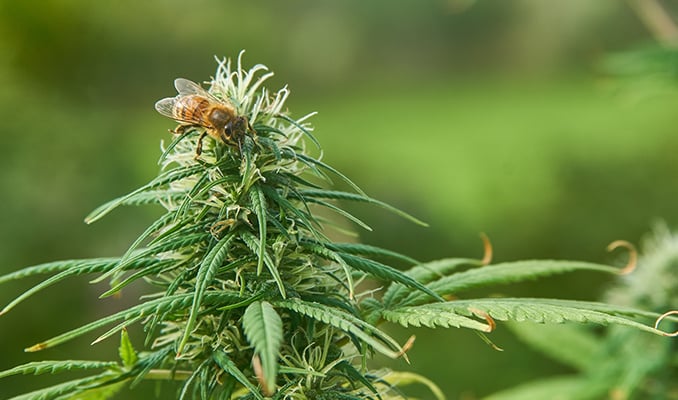As spring approaches, cannabis enthusiasts eagerly prepare for the outdoor growing season, envisioning lush gardens and bountiful harvests. However, successful outdoor cultivation requires careful planning and strategic decision-making, particularly when it comes to planting your cannabis in the spring. In this article, we’ll explore the essential elements of sun, soil, and strategy, providing valuable insights on how to strategically plan your spring cannabis planting for a bountiful harvest.
1. Assessing Sunlight Exposure: Sunlight is one of the most critical factors influencing cannabis growth and development. When planning your spring cannabis planting, assess the sunlight exposure in your chosen garden location. Aim for a site that receives at least 6 to 8 hours of direct sunlight per day, preferably during the hours of peak intensity. South-facing slopes or open areas with minimal shading from trees or structures are ideal for maximizing sunlight exposure and promoting healthy plant growth.
2. Evaluating Soil Quality: The quality of your soil plays a crucial role in the success of your spring cannabis planting. Conduct a soil test to assess key factors such as pH, nutrient levels, and texture. Cannabis plants thrive in well-draining, nutrient-rich soil with a pH level between 6.0 and 7.0. Amend your soil as needed to achieve these optimal growing conditions, incorporating organic matter such as compost, aged manure, or worm castings to improve soil structure and fertility.
3. Planning Planting Strategy: Once you’ve identified a suitable location with adequate sunlight exposure and quality soil, it’s time to plan your planting strategy. Consider factors such as spacing, layout, and planting techniques to maximize yield and efficiency. Space your cannabis plants appropriately to allow for adequate airflow and light penetration, minimizing the risk of mold, mildew, and pest infestations. Additionally, consider using companion planting techniques to enhance soil health, repel pests, and attract beneficial insects.
4. Timing Your Planting: Timing is critical when it comes to spring cannabis planting, as the success of your crop depends on favorable weather conditions and optimal growth cycles. Wait until after the last frost date in your region before planting cannabis outdoors to avoid potential damage from cold temperatures. Aim to plant your cannabis seeds or clones during a period of stable weather, with temperatures consistently above 50°F. Consulting local gardening resources or planting calendars can help you determine the optimal timing for your spring cannabis planting.
5. Implementing Watering Schedule: Proper irrigation is essential for supporting healthy plant growth and maximizing yield during the spring growing season. Develop a watering schedule based on the specific needs of your cannabis plants, taking into account factors such as soil moisture, temperature, and humidity. Water your plants deeply and infrequently, allowing the soil to dry out slightly between waterings to encourage robust root development. Consider using drip irrigation systems or soaker hoses to deliver water directly to the root zone, minimizing water waste and promoting efficient nutrient uptake.
6. Monitoring and Maintenance: Once your spring cannabis planting is underway, it’s essential to monitor your plants regularly and provide ongoing maintenance as needed. Keep an eye out for signs of nutrient deficiencies, pest infestations, or disease symptoms, and take prompt action to address any issues that arise. Prune your plants as needed to promote airflow and light penetration, remove dead or diseased foliage, and support healthy bud development. Additionally, consider implementing organic pest control measures and companion planting techniques to protect your plants and enhance overall garden health.
7. Harvesting and Enjoying: As your spring cannabis planting progresses, you’ll soon be rewarded with a bountiful harvest of vibrant, healthy plants ready for harvest. Monitor your plants closely for signs of maturity, such as changes in color, aroma, and resin production. Harvest your cannabis plants at the optimal time to achieve the desired potency, flavor, and effects. Once harvested, properly dry and cure your cannabis buds to preserve their quality and potency, ensuring a satisfying and enjoyable end product.
In conclusion, sun, soil, and strategy are essential elements to consider when planning your spring cannabis planting for a bountiful harvest. By assessing sunlight exposure, evaluating soil quality, planning your planting strategy, timing your planting, implementing a watering schedule, monitoring and maintenance, and harvesting and enjoying the fruits of your labor, you can set yourself up for success and enjoy a successful outdoor cannabis cultivation experience. With careful planning, attention to detail, and a bit of patience, you can cultivate vibrant, healthy cannabis plants and reap the rewards of your spring planting efforts.
Read More:
Cannabis Bonsai: The Beauty of Miniature Cloning
Clone Cuisine: Nutrient Recipes for Thriving Plants
The Hidden Costs of Market-Bought Cannabis













